Nominations for the 2022 3D Printing Industry Awards are now open. Who do you think should make the shortlists for this year’s show? Let us know by casting your vote now.
GE’s aviation-focused manufacturing businesses GE Aerospace and GE Additive have laid out their vision for the future of industrial 3D printing via a tour around their US facilities.
Over the last decade, GE has steadily built out its 3D printing capabilities, buying Morris Technologies, Arcam and Concept Laser along the way. Utilizing its acquired technologies, the firm has managed to develop ground-breaking end-use parts for its own GE90, GE9X and Catalyst engines, as well as the LEAP engine of CFM International, a joint venture it established with Safran Aircraft Engines.
Perhaps the best known of these is the fabled GE 3D printed fuel nozzle tip. The component, which became something of a poster child for aerospace 3D printing when it was unveiled, is designed to be 25% lighter and 15% more fuel efficient than CFM56 alternatives. Since first developing the part, GE has manufactured it over 140,000 times, an unprecedented feat in the aerospace 3D printing industry.
However, GE may be one of the largest firms operating in the 3D printing space, but it rarely issues detailed updates on the progress of its activities there. This conservative reporting approach leaves open a number of questions about the potential of its technologies to meet the industrial applications that are often heralded as additive manufacturing’s future.
So what ground-breaking innovation is GE cooking up next? Well fortunately, the company has invited 3D Printing Industry among a select few media outlets to two of its factories in Cincinnati, Ohio, to find out. While photography inside the firm’s development sites was strictly forbidden, attendees have been cleared to report on what they found, including the following breakdown of its latest R&D initiatives.
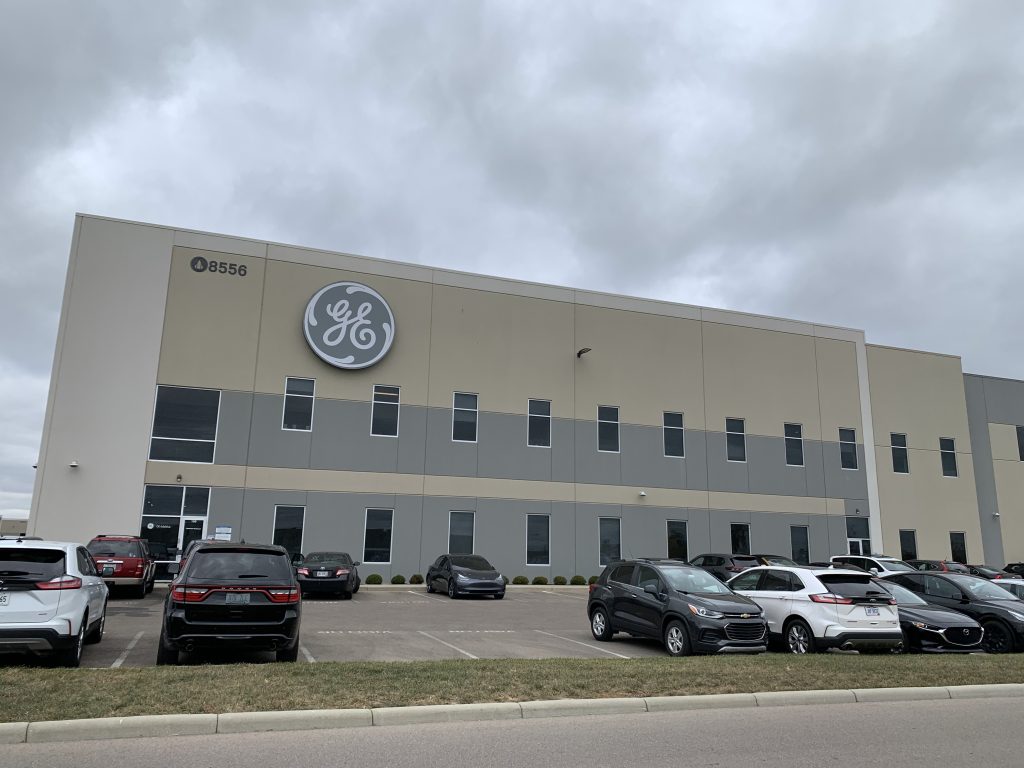
GE’s Additive Technology Center
First up on GE’s tour was a visit to its Additive Technology Center (ATC), a colossal R&D center dedicated to the development of 3D printed aerospace parts, for production at one its numerous manufacturing facilities specializing in additive manufacturing, such as that in Auburn. The trip was led in part by ATC Site Leader Chris Philp, who explained how work carried out at the GE Aerospace-run complex helps inform the development of machines built at GE Additive.
“We have open conversations with them, but it’s important for everyone to get that feedback. GE Additive have been very open to that,” Philp said ahead of the tour. “A lot of our feedback helped develop the [Concept Laser] Series M2 machines.”
Following a detailed safety briefing, journalists were then taken onto the factory floor to see GE’s cutting-edge additive manufacturing technologies for themselves. Once there, Philp showed how the company has progressed from a sensor housing developed in 2015, its first FAA certified 3D printed part, to the more structural components of its Catalyst engine.
The former, Philp explained, protects GE90 sensors from icing damage, but if it were to fail, he admitted the part would just need replacing and wouldn’t compromise the engine. Since then, the former GKN engineer said GE has “leveraged its success from the GE90,” to develop parts like cyclonic inducers and dust separators for the GE9X, the “world’s most powerful commercial aircraft jet engine.”
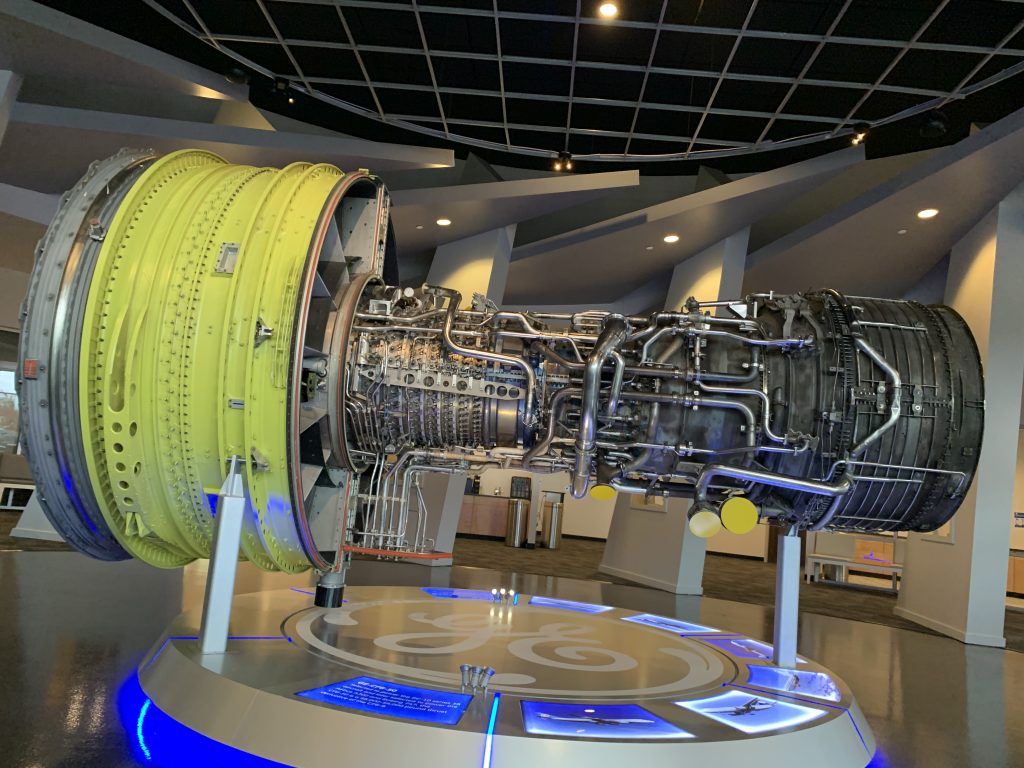
As its name suggests, the latter works to prevent large dust particles from entering and damaging the GE9X’s thrust-generating engine core. Fitted all around the engine, these devices feature complex internal geometries that effectively spin particles away. In doing so, Philp added that they “improve uptime and reduce maintenance” for a turbofan engine that’s set to power Boeing’s 777X airliner.
With the Catalyst, Philp showed how GE has moved into flight-critical parts like propeller gearboxes (PGBs) adding that “if this fails we’ve got a much bigger problem.” The ATC’s Site Leader also explained that 3D printing enabled a huge amount of part consolidation in the engine, with some 35% of its total 855 parts now being printed into just 12.
In more recent innovations, it was revealed that the ATC has expanded its pool of metals from three to six, including cobalt chrome and nickel alloy 718, alongside two aluminums and two titaniums. Further along the tour, Philp later alluded to some of the development work GE Aerospace is doing for the US Army with its GE T901 engine, a propulsion system being designed to replace the Army’s GE T700s.
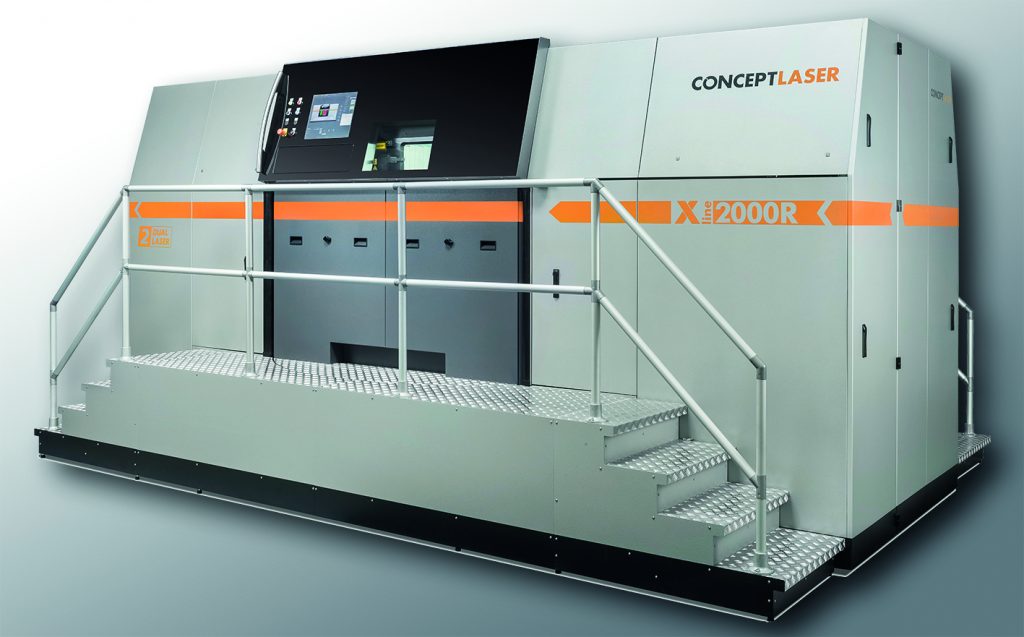
As the ATC tour came to a close, GE provided an update on its other USAF project, the XA100 adaptive cycle engine being built to enable multi-modal fighter jet flight, but it was the final remarks of GE Aerospace’s GM of AM Benito Trevino and Additive Chief Manufacturing Engineer Brian Talbert, that were arguably the most revealing about its plans.
Trevino explained how GE’s seeing “a significant increase in additive manufacturing demand across numerous military and commercial platforms, featuring some of the most complex designs it has ever seen.” The 24-year veteran also said the firm was seeing a reinforcement of 3D printing’s value proposition, with significant part consolidation “improving engine performance and simplifying the supply chain” to unlock faster lead times and reduced inventory.
Talbert, meanwhile, shed light on what GE Aerospace sees as ‘industrialization,’ a term that cropped up several times throughout. The engineer, who worked on GE’s Catalyst, implied that it meant the process of bringing parts from the drawing board into reality. This, he said, involves analyzing a part’s “physical characteristics defining quality,” to ensure they’re safe, functional and cost-effective for end-use.
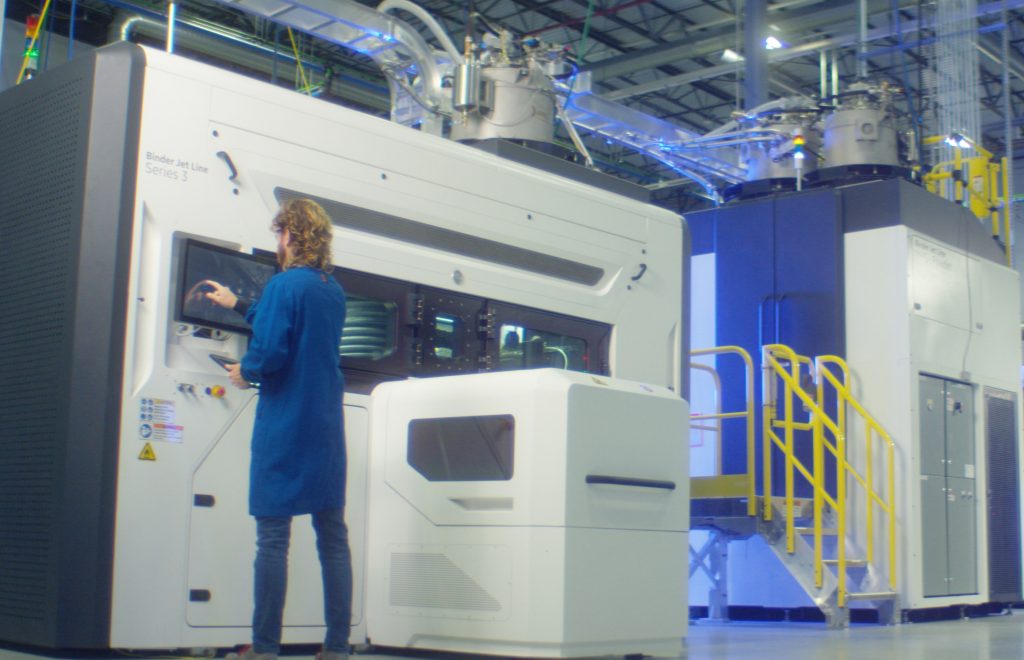
Binder jetting advances at GE Additive
Just four miles away, the second stop on GE’s 3D printing tour took attendees to a new GE Additive facility. Never shown to outside media before, the complex was opened to accommodate the growth of GE Additive, which had initially been housed in the ATC, but moved into another factory in June 2020 to facilitate its machine testing activities, which include the development of binder jet systems.
Rather than acquire a developer of such technology, as it did with Arcam and Concept Laser, GE started its own R&D program in 2016. Over the next two years, the firm built H1 Alpha and H2 Beta versions of a proprietary binder jet machine, the performance of which it continues to work on optimizing with partners such as Cummins, Wabtec and Sandvik.
At GE Additive’s Cincinnati facility, Brian Birkmeyer, its Binder Jet Product Line Leader, led a tour of the factory floor alongside its Innovation Executive and fuel nozzle tip developer, Joshua Mook. As at the ATC, the sensitive R&D being conducted there was hidden behind several layers of security, including large doors to obscure machines from outside view, but once inside, the GE team were happy to share.
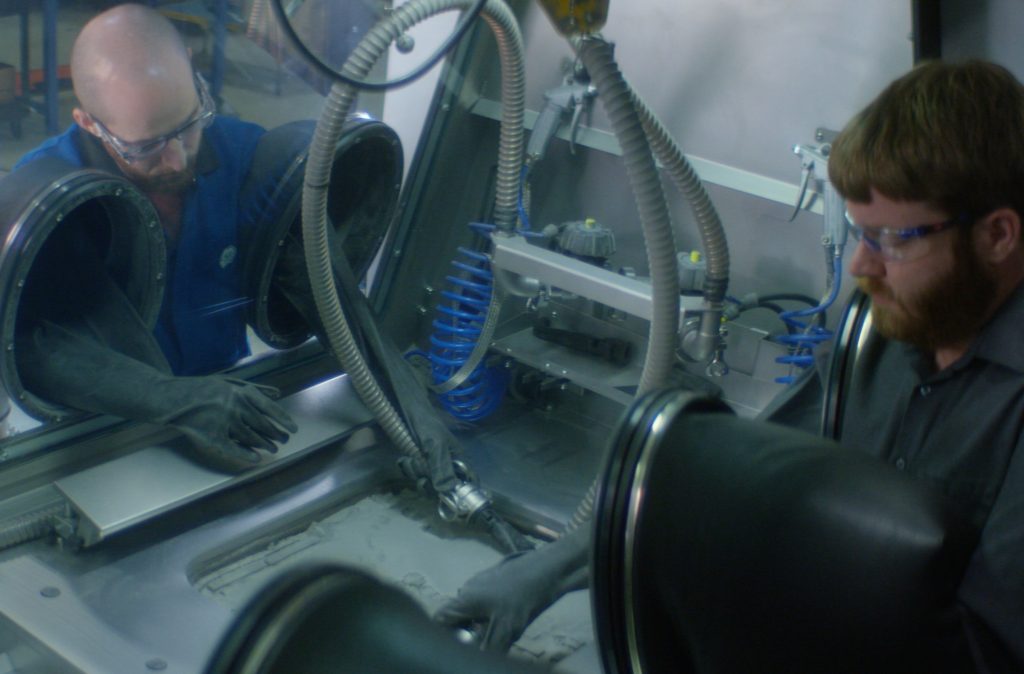
On the shop floor, engineers were hard at work fettling the latest version of GE Additive’s binder jet machine: the Series 3, in addition to its Binder Jet Line of ancillary products. Built for deployment in serial production environments, the system 3D prints via the deposition of a water-based binder onto a powder bed, before its water content is evaporated, leaving behind a cross-linked ‘green part.’
To prove just how strong these prints are, the team challenged guests to try to snap test parts, and they proved extremely resistant to breakage. The system doesn’t accomplish this at the expense of accuracy either, and is said to be capable of producing components with wall thicknesses of less than 500µm. Thanks to its interchangeable entry conveyor and the setup of its pre and post-processing machines, it’s also possible to string Series 3s together to create a production line.
By doing so, Mook said users can achieve “waterfalled powder delivery” in a way that drives a “100% utilization rate,” and truly unlocks “lights out manufacturing.” In terms of applications, Mook and Birkmeyer said the system was first developed as there was no binder jet solution that met GE’s casting manufacturing needs, but they also highlighted automotive as a demanding potential use case.
When questioned on how their company views its competitors, the pair wouldn’t be drawn on issues like HP’s recent Metal Jet launch or Nikon’s SLM Solutions takeover. That said, they were very honest about binder jetting’s limitations around parts with complex internals, with Mook saying users “aren’t going to be able to build a fuel nozzle” with it. On the wider issue of market rivals, he added that GE is “a little bit unique” in targeting industrial binder jetting, therefore it’s “playing its own game.”
To stay up to date with the latest 3D printing news, don’t forget to subscribe to the 3D Printing Industry newsletter or follow us on Twitter or liking our page on Facebook.
While you’re here, why not subscribe to our Youtube channel? featuring discussion, debriefs, video shorts and webinar replays.
Are you looking for a job in the additive manufacturing industry? Visit 3D Printing Jobs for a selection of roles in the industry.
Featured image shows GE Additive’s facility in Cincinnati, Ohio. Photo by Paul Hanaphy.



